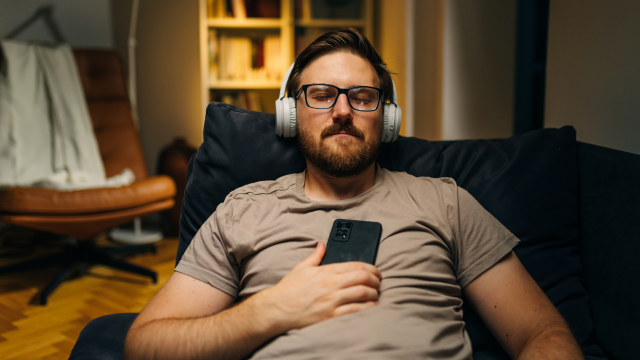While it’s possible to optimize your stress for a better performance to some degree, too much stress at work can make you less productive and generally more unhappy in life overall. You need a balance and to find ways to destress on the job, so consider using a tried-and-true relaxation technique called progressive muscle relaxation, which you can do in your office or wherever you’re working when stress strikes.
What is progressive muscle relaxation?
Progressive muscle relaxation (or PMR) is a method of relaxing that involves tensing and relaxing each muscle group in your body. Conceptualized by a doctor named Edmund Jacobson (and first presented by him at Harvard in the early part of the last century), it’s a time-tested technique that can be useful for relieving anxiety or even falling asleep at night. The idea is that there’s a strong link between your body and mind, so if your muscles are all in a neutral, chill state, your brain will get the hint that there’s no impending danger and it, too, can calm down.
How to try progressive muscle relaxation
Find a comfortable position to sit or lay, preferably in a quiet place where you’ll have some peace for a moment, then focus your attention on different muscle groups. Generally, per WebMD, you want to start with your lower extremities. Tense the muscles in one leg as you inhale for five to 10 seconds, then totally relax them as you exhale, taking note of the difference in the two feelings and the difference between how the relaxed leg and your other one feel. Move on to the other leg, your abdomen, your arms, your shoulders, and, eventually, your face. Once everything is relaxed, take a few minutes to sit or lay there, focusing on deepening your breathing and feeling your heart rate decrease.
Why this is great for the workplace
I’ve always done this to fall asleep at night and there’s plenty of research to suggest that I’m far from alone in enjoying the bedtime benefits of PMR, but there’s also research to suggest it’s helpful for work-related stress. In 2022, a team of researchers published their findings in BMC Psychology after investigating the effect of PMR on stress and anxiety among nurses caring for COVID-19 patients, ultimately concluding that the technique should be taught in nursing school because it’s just that good.
Because it requires no tools, medications, or special resources of any kind, PMR is something you can do at your desk, in a break room—or hell, in the bathroom—without any major fanfare. When planning your day’s schedule, you should already be including breaks, but make sure they’re long enough to accommodate the PMR process in case you ever need to use it. Better yet, build it into your daily routine from the get-go to start maximizing the benefits of relaxing, destressing, and just plain chilling out at work.

Leave a Reply
You must be logged in to post a comment.